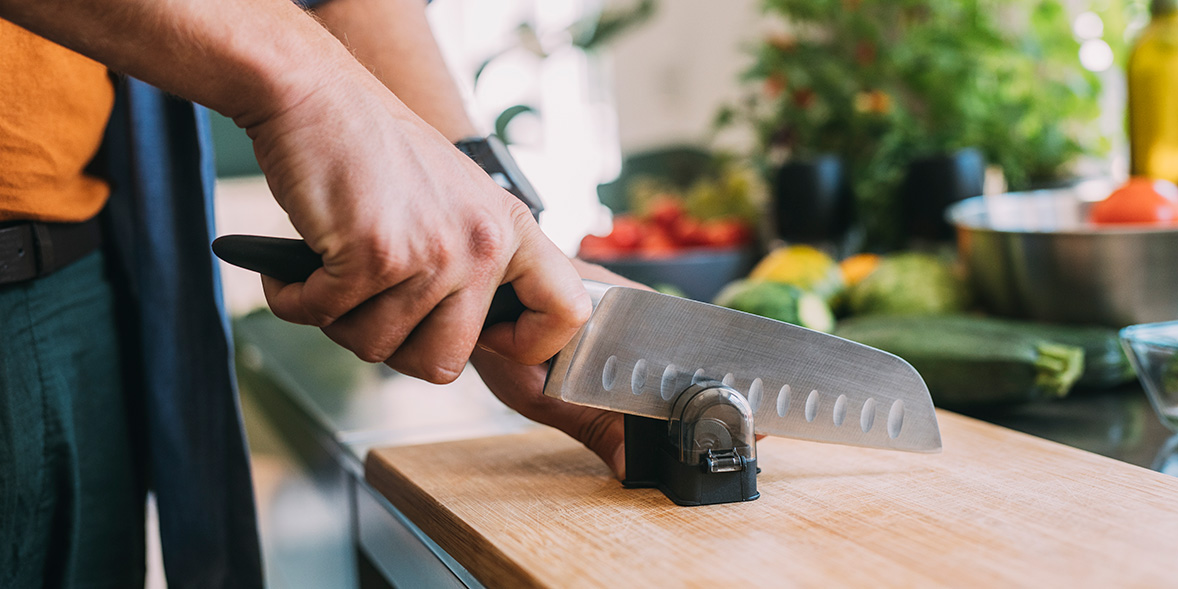When it comes to sharpening your knives, there are certain tips that you should know to ensure that your knives stay sharp and safe for use. Some of the tips include taking your time to hone your knives, taking the necessary steps to protect the blades from damage, and transporting your knives to a reputable knife sharpening service. You should also consider what type of grit you should use on your knives and when it is time to move on to a finer grit.
Transporting your knives
Knife sharpening services help you get your knives back in shape. These services are offered by brick-and-mortar stores and online services.
Online services can save you a lot of time. Some offer a pre-labeled package that you can mail in.
Others will drop off your knives at a local post office. In either case, you will need to pack your knives to keep them safe. You can also buy protective cases to protect your blades. However, you should take care not to break them while in transit.
Many companies charge a flat fee. You will be able to select the number of knives you want to be sharpened. The turnaround time can be as long as three weeks.
Some online companies will offer discounts for bulk orders. They may also provide loaner knives while you wait.
Some services offer free shipping. Togu, for example, offers a free service that ships your first pair of knives within 3 to 5 days. Their knives are made of VG-10 steel and are designed to last a long time.
Taking time to hone your knives
If you want to enjoy using your knives in the kitchen, you will need to take the time to hone them. This will ensure a sharper edge and help you avoid accidents.
Sharpening is the process of cutting away material to give your knife a sharp edge. It is not a necessity to have your knives sharpened every time you use them, but it is highly recommended to make sure they remain at their best.
Depending on your knife’s sharpness, you might need to have it honed on a weekly or monthly basis. For workhorse knives, you may need to have them honed before each use.
Honing your knives can be done at home, with a honing steel. A honing steel looks like a metal lightsaber. Hold the rod vertically on a work surface and position the heel of your knife against the steel.
Start to slide the blade downwards in a left-to-right motion. The idea is to make sure you touch the entire edge of your knife in every pass. Repeat this process four or five times, and continue to repeat the same motion on the other side of the blade.
Telling when it’s time to progress to a finer grit
There are several ways to tell when it’s time to move on to a finer grit. For a beginner, it’s best to stick with the basics. Oftentimes, the grit you use is based on the type of steel that’s used to make the blade.
For example, a fine grit stone is not nearly as abrasive as a coarse stone. This means you should be more careful with a finer stone. You also want to check for burrs frequently. If there are any, you should take the extra steps to remove them.
A multi-step sharpening progression is based on the concept that grit limits the keenness of a knife. It’s also a good idea to use a variety of stones. These include medium and fine stones. The coarser the stone, the longer it will take to sharpen the blade.
In addition to a stone, you’ll need some lubricant. If you choose a water-based lubricant, you’ll have to wash it off at the end.
Taking care of your knives after sharpening
If you’ve spent time sharpening your knives, you’ll want to ensure you maintain their new edge. To do this, keep your knives properly stored and in good condition. This can save you a lot of trouble down the road.
Keep your knives away from water, acidic food, and hard surfaces. These can corrode metal and dull blades. The next time you use your knife, wipe the blade clean with a damp paper towel.
You can also oil your knives for added protection. Apply a small amount of oil to a thick towel, and gently run the towel over the blade’s edge. Wipe off any excess oil.
Some chefs prefer to sharpen their knives before each culinary project. The resulting sharp blade makes cutting ingredients easy and helps prevent accidents. However, you shouldn’t do this for every use.
For proper maintenance, take your knives to a professional once a year or so. Sharpening services are a few dollars per item, but you’ll still get a better edge and longer life from your knives.

